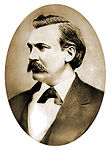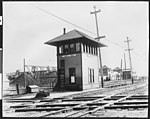Santa Fe 3751

Atchison, Topeka & Santa Fe 3751 is a class 3751 4-8-4 steam locomotive built in 1927 by the Baldwin Locomotive Works in Eddystone (Philadelphia), Pennsylvania for the Atchison, Topeka & Santa Fe Railway (ATSF). 3751 was the first 4-8-4 steam locomotive built for the Santa Fe and was referenced in documentation as type: "Heavy Mountain", "New Mountain", or "Mountain 4-wheel trailer". No. 3751 served in passenger duties until being retired in 1953. The locomotive was then placed on display in San Bernardino until it was restored to operating condition in 1991. It is currently located in the Central City East neighborhood of Los Angeles and has been listed on the National Register of Historic Places since 2000. It holds the distinction of being the oldest surviving 4-8-4 type steam locomotive in the world. The locomotive is currently owned and operated by the San Bernardino Railroad Historical Society, which uses the locomotive to haul occasional mainline excursion trains. However, a federally-mandated 15-year inspection put it out of service for three to four years. 3751's current overhaul is estimated to be completed in 2022.
Excerpt from the Wikipedia article Santa Fe 3751 (License: CC BY-SA 3.0, Authors, Images).Santa Fe 3751
Washington Boulevard, Los Angeles Downtown
Geographical coordinates (GPS) Address Nearby Places Show on map
Geographical coordinates (GPS)
| Latitude | Longitude |
|---|---|
| N 34.017222222222 ° | E -118.22527777778 ° |
Address
Washington Boulevard
Washington Boulevard
90058 Los Angeles, Downtown
California, United States
Open on Google Maps







